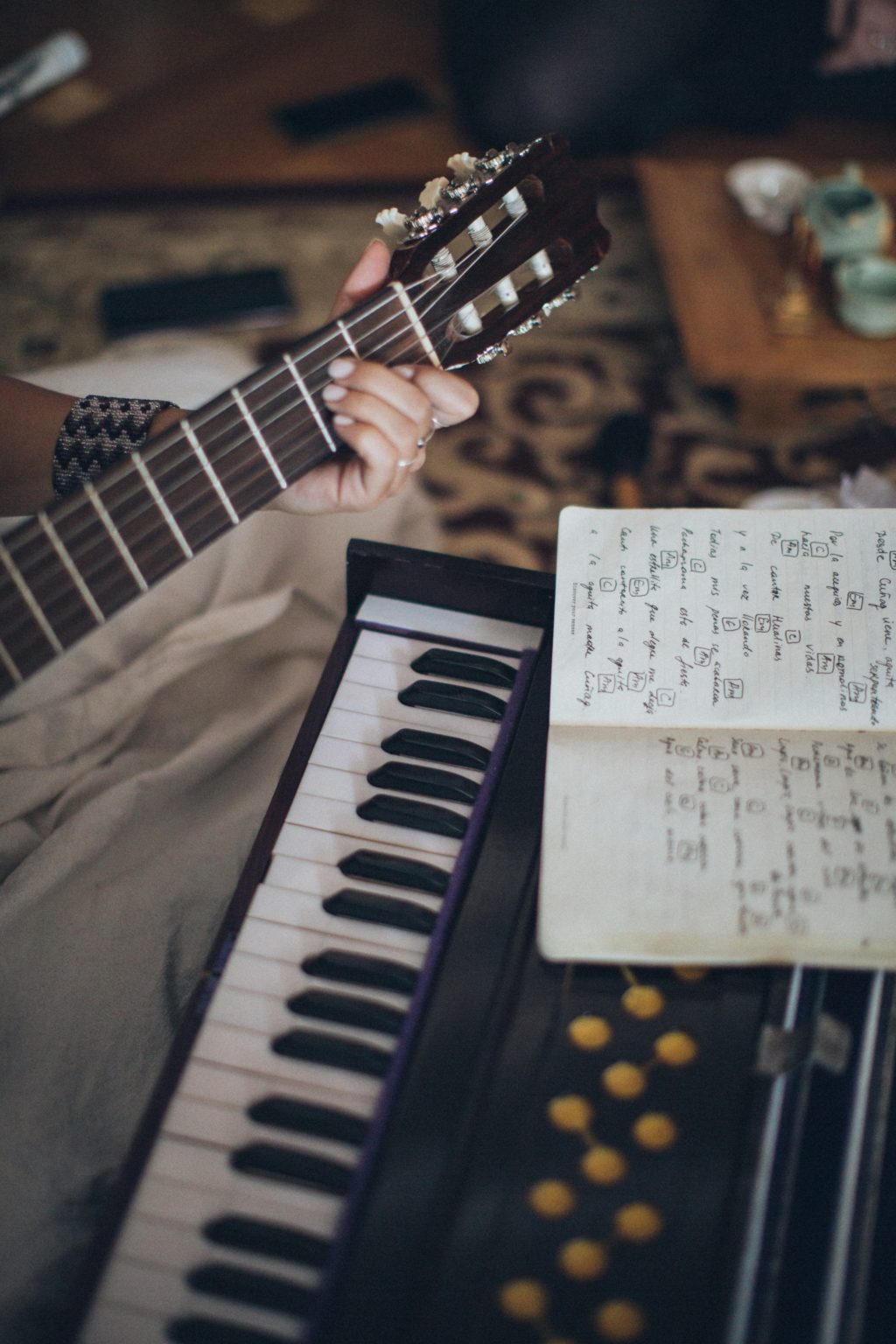
Think of the song that inspired you to play guitar…
For me it was “Tears in Heaven” by Eric Clapton, and as many may know, this is NOT an easy song for a beginner to play.
So what do you do when the songs you want to play are too difficult for you? Give up?
Never!!
Instead, what I did was to simplify it until I could play it, and as I improved, learned more and more until I knew the full song.
Let’s explore how we can do this with the song “Lean On Me” .
Level 1. Melody
The easiest way to simplify a song is, in most cases, to learn the vocal melody. This is often the same as the main riff or hook of the song, and usually played on guitar or piano.
If you can learn it just by listen to the song, try that now!
Even if you find it difficult, try it before reading the TABs bellow, and check what you get with what I’ve written out.
Here’s the melody for “Lean On Me”:

If you learned it in a different spot but it sounds the same as how I’ve written it, then don’t worry. You did good! Remember the guitar isn’t linear, so the same melody can be played in different spots. To learn more about this, check out my lesson on Octaves.
2. Power Chords
To level up from the melody we can start playing the chords. If the melody is easy and slow enough, I suggest converting it into Power Chords.
Now there’s two different way’s we can try this.
The first is using traditional Power Chords rooted on the Low E and A strings:

But for some this can still be difficult and painful, so we can simplify even these and play them on the B and High E string, barring our index finger to play both notes:

These Power Chords are rooted on the High E, meaning the highest note we play gives it’s name (my article on Power Chords explores this further).
This one, instead of starting on a C chord, it starts on a G, and moves up the scale (G – A – B – C). Like this we can develop strength and still play the song until we are ready to try the full Power Chord.
3. Combine Melody and Chords
Ok! We’ve got the power chords down! Next step is to expand that into full chords. These chords we say have a Quality to them, meaning they’re either Major (happy) or Minor (sad). We’re lucky with “Lean On Me” that the melody and the chords move together, but that might not always be so. And even here we’ll have to adjust a bit.
Below I’ve combined the melody with only a few chords – C, G, Em, and G7:

4. Chord Melody
The last step is being able to combine the melody into a chord progression, so you’re playing both simultaneously!
For this one I’ve written it using Barre chords so we can use the full neck, and make it easier to transition between all the chords.

Need help learning this and other songs? Contact me for a free lesson!
